 |
|
| plants text index | photo index |
| coastal plants |
| Tongkat
Ali Eurycoma longifolia Family Simaroubaceae updated Oct 2016 Where seen? This rather innocent looking treelet has a formidable reputation as a purported aphrodisiac. It is still sometimes seen growing wild on some of our natural places, including on our shores and rocky cliffs. It was also found in our primary and secondary forests including Tanglin and Bukit Timah. Features: A small tree or a shrub (2-3m tall) with an umbrella-like rosette of leaves at the tips of the branches. The leaf (50-60cm long) is made up of 45-80 leaflets. The tiny, hairy cup-shaped flowers are purplish-crimson, and according to Corners, with a slightly foetid smell. Male and female flowers are found on different trees. These turn into oval fruits that ripen yellow then red. Human uses: The tree has many traditional medicinal uses. According to Corners, the bark and especially the roots are 'exceedingly bitter' and the bark was used as one of the native remedies for malaria. According to Burkill, the bark is also used in a tonic for after childbirth. It is also pounded and used externally for headaches, wounds, ulcers and sores. Status and threats: This plant is listed as 'Critically Endangered' on the Red List of threatened plants of Singapore. Elsewhere, the plant is also threatened by over-collection for the traditional herbal trade. |
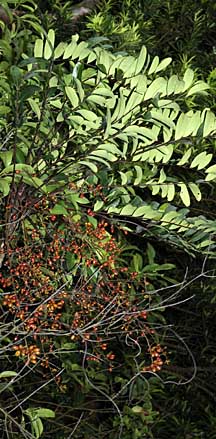 Sentosa, Mar 09 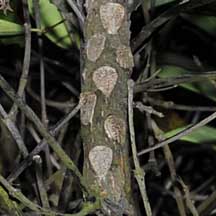 Sentosa, Apr 09 |
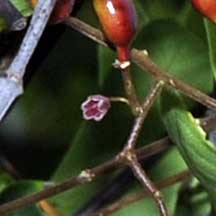 Sentosa, Mar 09 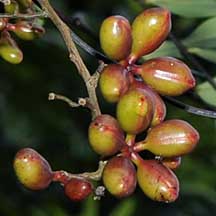
|
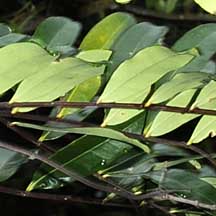 Sentosa, Mar 09 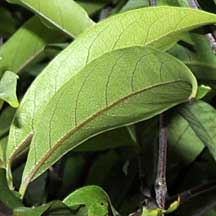 |
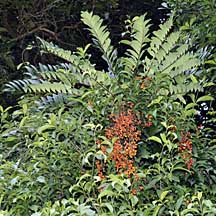 Sentosa, Apr 10 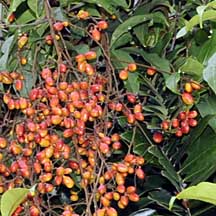 |
| Tongkat ali on Singapore shores |
| Photos of Tongkat ali for free download from wildsingapore flickr |
| Distribution in Singapore on this wildsingapore flickr map |
|
Links
References
|
|
|